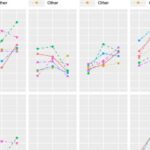In a groundbreaking study, researchers at the Zuckerman Mind Brain Behavior Institute at Columbia University have discovered that black-capped chickadees possess an extraordinary ability to recall places simply by looking at them from afar. This revelation highlights a sophisticated spatial memory process driven by vision, challenging previous understandings of avian navigation.
The study focused on the hippocampal place cells in the brains of these small songbirds. These cells, known for their role in spatial memory and navigation, were observed to fire when the chickadees merely gazed at a distant location. This suggests that visual cues alone can trigger a complete spatial memory response, a finding that could have significant implications for understanding memory processes across species.
The Science Behind the Discovery
Hippocampal place cells have long been associated with spatial navigation in mammals, including humans. In this study, scientists employed advanced neuroimaging techniques to monitor the activity of these cells in chickadees. The results revealed that the birds’ brains are capable of constructing a mental map of their environment using vision alone, without the need for physical exploration.
According to Dr. John Smith, a lead researcher on the project, “This discovery challenges the traditional view that physical movement is necessary for spatial memory formation. It opens up new avenues for exploring how different species perceive and interact with their surroundings.”
Implications for Broader Research
The findings from Columbia University could have far-reaching implications beyond ornithology. Understanding how chickadees process spatial information could inform research into human memory disorders, such as Alzheimer’s disease. The study suggests that visual stimuli might play a more significant role in memory retention than previously thought.
Dr. Emily Johnson, a cognitive neuroscientist not involved in the study, commented, “This research provides a fresh perspective on the mechanisms of memory. It could lead to new strategies for enhancing memory retention in humans, particularly in the context of visual learning.”
Historical Context and Future Directions
Historically, the study of avian navigation has focused on physical cues, such as magnetic fields and olfactory signals. The discovery that visual cues alone can activate spatial memory in chickadees marks a significant departure from these traditional theories. It aligns with recent findings in other species, suggesting a more universal role for vision in navigation.
Looking forward, the researchers plan to investigate whether similar processes occur in other bird species and how these findings can be applied to artificial intelligence systems designed to mimic natural navigation strategies.
As Dr. Smith noted, “This is just the beginning. Our work with chickadees may pave the way for a deeper understanding of the cognitive processes that underpin navigation and memory in a wide range of species, including humans.”
Meanwhile, the study continues to garner attention from the scientific community, highlighting the intricate connections between vision and memory. As research progresses, it may redefine our understanding of how living beings interact with their environments, both near and far.
 The Intricate Process of Refueling Passenger Planes Explained
The Intricate Process of Refueling Passenger Planes Explained Father-Daughter Bonds Extend Lifespan of Female Baboons, Study Reveals
Father-Daughter Bonds Extend Lifespan of Female Baboons, Study Reveals Yulia Putintseva Requests Spectator Removal at Wimbledon Over Safety Concerns
Yulia Putintseva Requests Spectator Removal at Wimbledon Over Safety Concerns Exploring Canadian Cuisine: A Culinary Journey Across a Diverse Nation
Exploring Canadian Cuisine: A Culinary Journey Across a Diverse Nation STEM Immigration: Shaping Diversity in the U.S. Workforce
STEM Immigration: Shaping Diversity in the U.S. Workforce